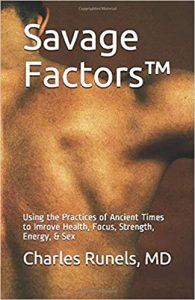This is one of a series of lessons in the Law of Health: 10 Essential Steps to Glorious Health & Miraculous Healing
My baseball rolled off the practice field and toward the creek
Eight years old, I had one baseball and mine was rolling toward “Crisoak Creek.” I don’t know the real name of that creek, but the water was the color and smell of what we called “crisoak” (The real name of the chemical in the water is “creosote”, a category of chemicals put into telephone poles to keep them from rotting).
The putrid chemical smell of that creek would burn my nostrils from 20 yards away. I do not know what industries dumped their waste into that creek, but in the 1960s there were no laws to prevent it. Later, the law would change and eventually the creek would be clean again, but then, I feared that if the ball went into the water it would dissolve. I at least knew that if I entered the water to retrieve the ball that I would develop blistered stinking arms by the time I made it home to wash.
I also remember that I uphill along the bank of that creek and find contributing streams, and if I followed one of those streams uphill, then I would walk away from the smell of the creek, away from town, away from even the suburbs, and into a deep forest of pine and oak and fern. I could walk all day away from Birmingham and never cross a paved road (and often did with the distances getting longer as I got older).
The further away from the city that I walked, the more clear the water.
Eventually, the steel companies strip-mined those miles of forest for the coal. But, then, when I was a child, I could trace the water upstream to clean air, clean water, and lush forest.
Go Upstream
To awaken the body and mind, it helps to remember those creeks and streams. You benefit from considering the current medical research, but it also helps to trace thought back upstream to a cleaner place.
Downstream, the factories make drugs that cure disease, and that is good. We need the drugs.
But, upstream, in the thoughts written by those before the times of pharmaceuticals, when thought and food and movement and prayer were all there was–upstream you find powerful healing thoughts that will awaken your mind and body.
When new medical research appears, then people are writing to add to knowledge; but, they are connected to what’s upstream. Without being connected to that research, without connecting to upstream, they are less likely to contribute to the downstream.
Go as far upstream as possible, where the water is clean and flows from those who lived and wrote at least 500 years ago. There you find ideas about health unpolluted by the hope that the local pharmacy will save. There you find ideas from minds that lived in the wilderness, never watched a TV show, never saw a commercial.
They never heard recorded music, only the music that came from the heart of those who would sing in the fields or at home after a day’s work, and perhaps at a rare public event or at the temple.
They had little hope of recovery from severe infection. Surgery was practically non-existent. They knew they had only one body with little hope of recovery from illness except with what might come from connecting to the body’s own inner intelligence and healing powers and from connecting to a higher power that animated the body.
Drink from this stream of thoughts as close as you can to the fountainhead, and you will awaken to a better understanding of and connection to glorious health and miraculous healing.
Go Downstream
If you go to the local health food store, you will find many who trust the opinion of the cashier at the checkout counter more than they trust a research cardiologist at the Mayo Clinic. In some ways, this opinion is justified because the research cardiologist may be so focused on the downstream that the fountainhead is forgotten. If you forget the fountainhead, then at best you sculpt a diseased body that can be helped by the surgery and pharmaceuticals that are created downstream; at worst you see death.
With continued focus on the downstream and the identification of some errors in the details found in the fountainhead, some modern physicians ignore the fountainhead completely and though they may be skilled as a technician they rightly should be mistrusted as healers.
On the other hand, there are those who see clearly the wisdom and the purity found in the ancient teachings and unchanging principles of the laws of health but smell the stench of the downstream and never make it to the factory.
It’s difficult to positive think your way or even pray your way out of a motor vehicle accident with a severed spleen while you bleed internally. It’s difficult for the surgeon to repair your spleen and save your life unless you will accept multiple medicines, some of which will be given to you by iv, and some of them you will inhale and some you will take by mouth.
With trauma, it’s easy to see how the downstream makes healing possible that the ancients could not do. But, there are many medical problems (infections, metabolic problems, for example) that are just as dramatic and just as untreatable without the medicines found at your local pharmacy–medicines that did not grow from a tree and that did not come from a root, but came from a factory.
The wise person, sculpting the body-temple, looks upstream and looks downstream with reading and study and critical thinking and with prayer and meditation and with consultation with trusted advisors to find what is needed for health and healing.
Do Today
- Read ABC of Reading
, by Ezra Pound (to think about how to read upstream and downstream).
